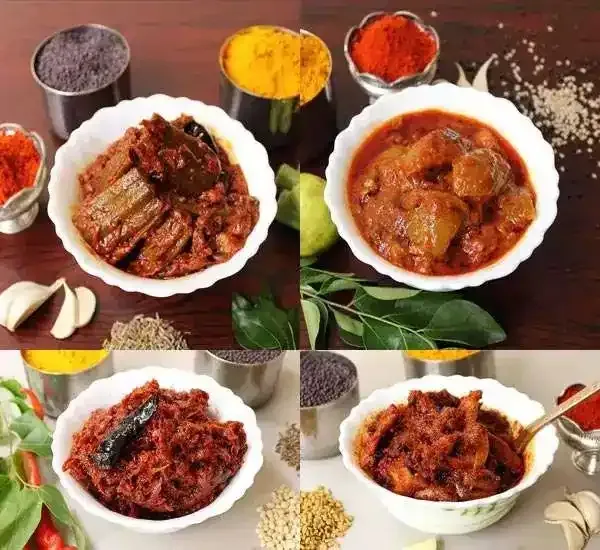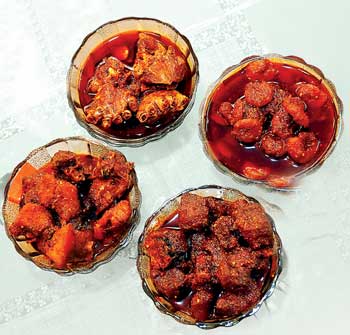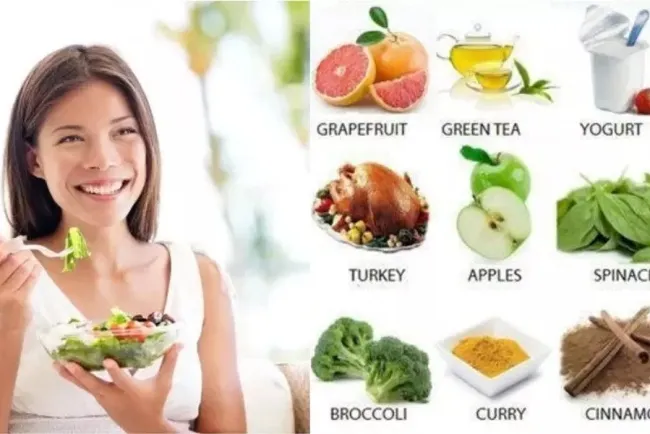Savor the Spice: A Guide to Non-Vegetarian Pickles...!!!
Non-vegetarian pickles are a savory and spicy accompaniment that can elevate any meal. The preparation involves marinating, frying, and mixing meat or seafood with aromatic spices and oils.

Non-vegetarian pickles add a delightful and spicy touch to meals, offering a burst of flavor that enhances various dishes. Made from different types of meat, fish, or seafood, these pickles are preserved in a blend of spices and oils.
Varieties of Non-Vegetarian Pickles
-
Chicken Pickle: Comprises small pieces of chicken marinated in a spice blend and cooked in oil.
-
Mutton Pickle: Features tender mutton pieces, spiced and preserved in oil.
-
Fish Pickle: Made from fish fillets, typically preserved in a spicy masala mix.
-
Prawn Pickle: Contains prawns or shrimp, cooked with spices and oil.
-
Beef Pickle: Involves beef pieces, seasoned and preserved in a tangy, spicy mixture.
Ingredients for Non-Vegetarian Pickles
The specific ingredients can vary based on the type of pickle and regional preferences, but commonly used components include:
-
Meat or Seafood: Chicken, mutton, fish, prawns, or beef.
-
Oil: Typically mustard oil, but other oils like sesame or vegetable oil can also be used.
-
Spices: Turmeric, chili powder, coriander powder, cumin seeds, mustard seeds, fenugreek seeds, and asafoetida.
-
Salt: For seasoning and preservation.
-
Acidic Component: Vinegar or lemon juice to enhance flavor and act as a preservative.
-
Garlic and Ginger: To add flavor and aroma.
-
Green Chilies: For extra heat and spice.

Preparation Process for Non-Vegetarian Pickles
1. Preparing the Meat/Seafood
-
Cleaning and Cutting: Clean the meat or seafood thoroughly and cut it into small, bite-sized pieces.
-
Marination: Marinate the pieces with a mixture of turmeric, chili powder, salt, and lemon juice. Allow it to sit for a few hours for the flavors to penetrate.
2. Cooking the Meat/Seafood
-
Initial Frying: Heat oil in a pan and fry the marinated pieces until they are thoroughly cooked and golden-brown. Remove and set aside.
3. Creating the Spice Mix
-
Roasting Spices: Dry roast spices like mustard seeds, cumin seeds, fenugreek seeds, and coriander seeds until they release their aroma. Once cooled, grind them into a fine powder.
-
Mixing Spices: Combine the roasted spice powder with turmeric, chili powder, and asafoetida.
4. Assembling the Pickle
-
Tempering: In the same pan, add more oil if necessary. Add finely chopped garlic, ginger, and green chilies. Sauté until the garlic turns golden brown.
-
Adding Spices: Add the spice mix to the pan and sauté for a few minutes until the spices are well-cooked and fragrant.
-
Combining Ingredients: Add the fried meat/seafood pieces to the pan and mix well to coat them with the spices. Cook for a few more minutes to blend the flavors.
-
Preserving: Add vinegar or more lemon juice to the mixture and cook for a couple of minutes. Turn off the heat and let the pickle cool.

5. Storage
-
Sterilizing Jars: Ensure that the storage jars are sterilized and completely dry to prevent any contamination.
-
Filling Jars: Transfer the cooled pickle into the jars, ensuring the pieces are submerged in oil to prevent spoilage.
-
Aging: Seal the jars tightly and let the pickle age for a few days to a week in a cool, dark place. This allows the flavors to develop and mature.
Non-vegetarian pickles are a savory and spicy accompaniment that can elevate any meal. The preparation involves marinating, frying, and mixing meat or seafood with aromatic spices and oils. With proper preparation and storage, non-vegetarian pickles can be enjoyed for months, adding a burst of flavor to your dishes. Whether you prefer chicken, mutton, fish, prawns, or beef, there is a non-vegetarian pickle to suit every palate.
What's Your Reaction?

















